GIOS
Historia, Cyklar och tävlingsverksamhet -1999
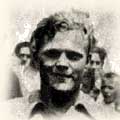
Tolmino Gios was born in 1916 in Vittorio Veneto and took his name from the little town near where he grew up - which is now a part of Slovenian territory. He had not yet reached the age of two years old, when his family decided to move to Torino, where Tolmino discovered the bicycle for the first time. Later on, Ruggero Radice, commentator of many Giro DItalias and Tour De Frances described him as a natural talent, a natural force.
Newspapers of the time recorded Tolmino as being a very good long distance cyclist after his most important success in the 1936 edition of the Kings Cup in Milano. The fans went crazy for him and a poll carried out by the Sport Illustrato magazine, ranked him as one of the favourites for both the 1936 World Championships in Berne, and more importantly, the Olympic Games in Berlin that same year. Sadly, Tolmino was not selected for the national team owing to a serious disagreement with the Italian team manager.
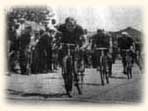
However, he was recruited by a professional team and participated in several Giro DItalias - riding along-side the likes of Bartali, Guerra and Di Paco. Then, in 1948 after the Second World War, Tolmino opened a small bicycle shop. Slowly the shop increased its turnover and employed more and more staff. At the same time, Tolmino also helped young, promising cyclists and 1958, enlisted onto his team Italo Zilioli, a great future champion.

In 1959, Alfredo Gios, the first of Tolminos sons, joined the company. At their factory located in Torino, they mostly produced city-bikes - from very classical models, to more extravagant ones such as the Policeman and Easy Rider (Picture: Tolmino and Alfredo Gios).
Although Tolminos second son (Adriano) preferred to work in the economic field, his second son, Aldo, joined the company in 1966. (Picture: Aldo, Roger De Vlaeminck and Tolmino).
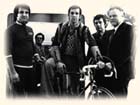
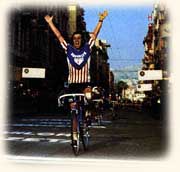
1972 was the year that everything started to change. At the Milan exhibition of that year, GIOS displayed their Easy Rider bicycle and Giorgio Perfetti, owner of the Brooklyn trademark, claimed he was struck by lightning. its perfect - I want a hundred! He exclaimed, adding that he saw in this bike the ideal prize for all the young boys who competed in the Brooklyn Chewing Gum cycling competition that he sponsored.
It all happened by chance recalled Alfredo Gios. That bike was only meant to help promote our city bikes, so I never thought that we would find someone who wanted us to produce it. The meeting with Perfetti therefore, was very important, because without him, GIOS road bikes would probably never have existed. Furthermore, its due to Brooklyn that we started producing different kinds of bicycles - firstly, a bike for the Chewing Gum competitions, and then the following year, when Brooklyn and Franco Cribiori decided to form a professional cycling team, as we were involved in the operation.
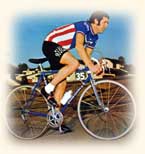
Many victories, one colour - GIOS BLUE!
GIOS decided that they needed a special colour, which went well with the Stars and Stripes designed jerseys of the Brooklyn cycling team. So after many attempts, the unique electric blue was born which has since become famous all over the world and an important part of professional cycling history.
Then in 1978, came the official press presentation of the great Didi Thurau, who was to represent GIOS with the Ljboerke professional team. The following years would see many famous victories featuring three of the greatest GIOS bikes of the past: the Super Record, Aerodynamic and Professional.

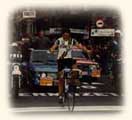
The eighties were also years of great successes, as Fons De Wolf - an exceptional model - won classic events like the Milan-Sanremo riding a GIOS Professional.
Continuous studies based on direct racing experience, has brought exceptional technological results for GIOS. First of all, the patented COMPACT rear fork-ends, where the rear wheel is inserted in the vertical position. The GIOS trademark also extended to Cycling fashion. The GIOS Fashion Line has been much appreciated during the years and is in constant evolution.
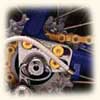
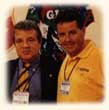

It has been some years now that technological development in the Racing bikes field is no more linked to frame geometry - which always offered the best solutions by classical design. But innovation never stops and GIOS has demonstrated this with the GIOS COMPACT patent and with other small but vitally important details that make every GIOS frame a unique piece. (Picture: Portrait of Alfredo for the Japanese catalogue)
This constant innovation has been accompanied during the years, by the development of new and important materials technologies. Firstly, the super treated and very resistant steel frame has been improved in lightness and stiffness by the new TIG brazing system and with heat treatments at extremely high temperatures.
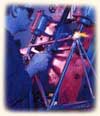
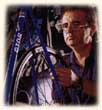
1998 represented a major goal for the GIOS bicycle company - its 50th Anniversary. To celebrate this milestone, the company created a vanguard product with special technical concepts - the CINQUANTENARIO. This frame was produced using DEDACCIAI 7003 tubing, thermally treated and with GIOS COMPACT rear drop-outs in the same alloy but treated at T6 state. 48 hours after brazing, the frame is thermally treated a second time with 2 heating and 2 cooling phases. (Picture: Aldo)
Brooklyn cycling team
Brooklyn - one of the truly iconic names of the early-to-mid 1970's pro peloton. Roger de Vlaeminck was the best-known, but certainly not the only, top-drawer rider on the team. (Roger's brother and teammate, Eric, pretty much owned the pro cyclo-cross world while he was racing.) The "Capt. America" jerseys together with the unbelieveably gorgeous cobalt blue Gios-Torino frames may be the best visual combo ever raced.
Brooklyn was (and may still be) a brand of chewing gum. The team was registered in Italy, but it almost always had a mixed roster of Italians and Belgians, roughly half-and-half. Roger de V. was one of the very best ever Classics riders (he holds the record for Paris-Roubaix wins with 4 - he also won most of the other biggies at some point). He also won the Tour of Switzerland one year, if memory serves, along with the points jersey in the Giro at least once. He was one of the few who never just rolled over and played dead for Merckx (Walter Godefroot, the erstwhile head of the Telekom team, was another.) Roger de Vlaeminck remains one of the all-time greats of road racing (and was pretty good at cyclo-cross as well), and he also remains the historical "face" of the team.
Because Brooklyn was an Italian-based team, the Giro was a higher priority for the sponsor than was the Tour, although Brooklyn showed up there some, also. The team failed to appear at the TdF one year for a most unusual reason: the head of the Brooklyn Chewing Gum Co. was kidnapped by the Red Brigades or some such group and the team's TdF budget for the year instead went to pay his ransom.
The sponsor ultimately pulled the plug sometime in the late '70's (they were certainly still around in 1976 and gone by 1980) because if team infighting. In their last year, the sponsor issued an ultimatum - win the Giro, or the sponsorship ends and the team goes bye-bye. It was not as unreasonable demand as it may seem, because the team had two Belgians capable of winning it - Ronnie de Witte and Johan de Muynck. They didn't much care for each other, though, and neither would work for the other. Their personal feud also split the team - in effect, they were both riding with half a team that regarded the other half of the Brooklyn team as at least as much of an enemy as anybody in a different jersey. Unlike Lemond and Hinault in the '85 and '86 Tours, neither de Witte nor de Muynck won. The sponsor, true to his word, pulled the plug on the team. P.S. A year or two later, de Muynck won the Giro for his new team (don't remember who it was, though).